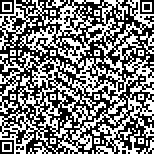下载中心
优秀审稿专家
优秀论文
相关链接
摘要

针对Haze optimized transformation(HOT)方法存在的地物敏感性、过度矫正、红绿蓝波段RGB合成影像色彩失真等问题,提出了相应的改进方法。首先,采用归一化差分植被指数(NDVI)结合地物红蓝光谱差(RBSD)制作通用掩膜,并利用掩膜提取原始影像植被覆盖区对应的原始HOT图部分作为HOT值评估雾霾强度的有效像素集;然后从有效像素集出发推断非植被区的HOT值,得到有效HOT图;最后以有效HOT图为参考,实施暗目标减法。在暗目标减法过程中,首先利用直方图取百分位数的方法确定起始波段的改正值,然后根据散射模型计算其他波段的改正值。在红蓝光谱空间中,去雾后的影像表现出与原始无云区相似的特征,同时保持了不同地物间的差异。实验表明:改进的HOT方法能有效去除雾霾及薄云;有效解决了HOT对水体、裸地、人造地物等地表覆被类型的敏感性问题,避免了RGB合成影像的色彩失真;并且统一了不同波段的纠正尺度,解决了某一(或几个)波段的过度矫正问题,防止了块斑和光晕的产生。
In this paper, we improved the original Haze-Optimized Transformation (HOT) method to solve the limitations of RGB synthetic images, such as sensitivity, over-correction, and color distortion. First, we combined the Normalized Difference Vegetation Index (NDVI) with the Red-Blue Spectral Difference (RBSD) to design a general mask that is insensitive to water bodies, bare soil, and man-made features. The mask was used to extract dense vegetation areas from the original image,and the corresponding regions of the initial HOT map were treated as a valid pixel set to assess haze intensity. The HOT values of invalid pixels based on the valid pixel set were inferred to generate a final valid HOT map. Finally, with the valid HOT map as reference to implement Dark Object Subtraction (DOS), the influence of haze can be eliminated. The corrected value of the starting band was determined during DOS by calculating the percentile values of the histograms. The scattering model was then used to produce the correction values of other bands. The scatter plots of the blue and red bands before and after haze removal show that the hazed images share the same characteristics with the clear regions while maintaining differences between different objects. The plaques and halo artifacts are also significantly minimized. Furthermore, experimental results reveal that the improved HOT method can effectively remove haze and thin cloud, as well as resolve the limitations of synthetic images.

